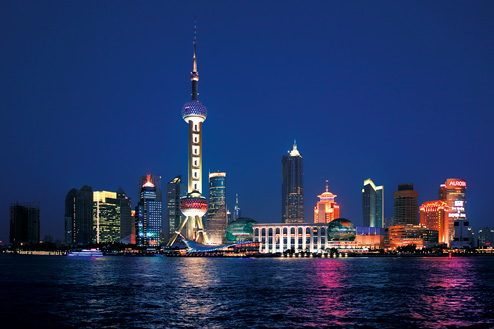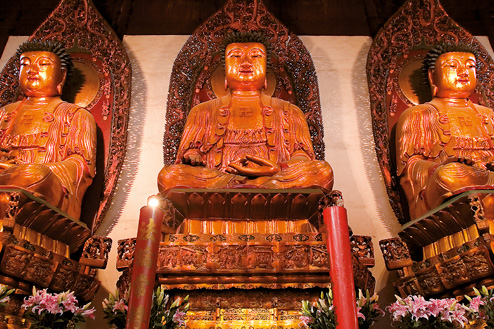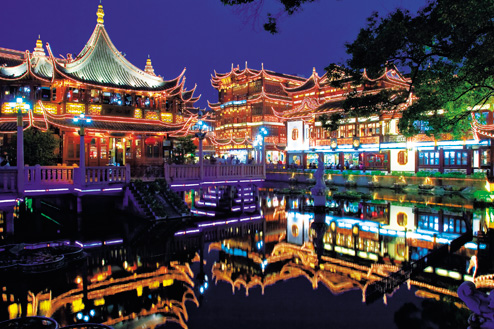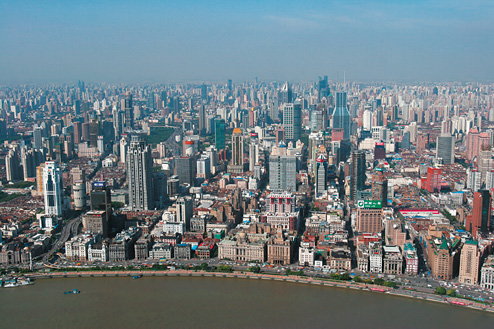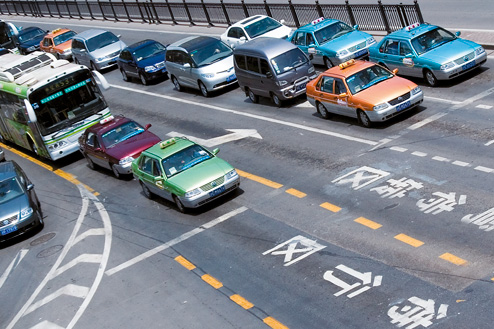Religion
Taoist, Buddhist and Confucian temples, places of worship for the three traditional beliefs in China, are dotted throughout the city, but no single religion dominates. Although genuinely faithful communities do exist, when asked about their belief in God, most young locals will answer with ‘no, I believe in myself’. The roots of this attitude can be traced back to the Cultural Revolution of the 1960s and 70s, when religious activity was not encouraged, but the 1980s brought a new era of religious semi-tolerance with Deng Xiaoping’s open-door policies. Practitioners are free to worship, as long as their places of worship are officially registered with the government’s department for religious affairs and not deemed to be threatening the stability of society.
The Catholic community in particular has a growing presence in Shanghai and boasts several impressive churches. Split between the ‘official’, state-run church and the Vatican-aligned ‘clandestine’ church, the two forms of Catholicism in China are slowly shrinking the gap, with Pope Benedict XVI quietly agreeing to recognise some bishops ordained by the Chinese Catholic Patriotic Association, and even hinting at a Papal trip to China, the first in history. Christmas is actively celebrated in Shanghai but, for most locals, it is simply an excuse to hang up decorations and exchange presents.
The Jewish community has a complex and important history in Shanghai, with the Sephardic, Russian and European Jews migrating into the city in three separate waves during the early 1900s, 1920s, and 1940s and 50s respectively. The Sephardic Jews from Baghdad and Bombay were particularly significant in the development of Shanghai, forming powerful business empires that constructed many landmark buildings still seen today; they also housed subsequent Jewish immigrants fleeing persecution in Russia and Europe. The current Jewish population has dwindled to approximately 250 but remains close-knit, with dedicated schools and synagogues.
Islam was first introduced into China in the sixth century AD, and current statistics suggest that there are nearly 20 million Chinese Muslims. This demographic is spread across 10 different ethnic minorities: most notably the Hui and Uighur, both of which practice diluted forms of Islam. The Turkic Uighurs, living primarily in Xinjiang province, have been greatly influenced by central Asia. The far more assimilated Hui, on the other hand, subscribe to what has been called ‘Islam with Chinese Characteristics’. The Uighurs have not always found favour with the government, and in March 2008 there were crackdowns on Uighur unrest in Xinjiang province. But recently in Shanghai there have been signs of a softer approach by authorities, and the city's Muslims are enjoying a renewed sense of freedom as evidenced by the seven active mosques and several popular Halal restaurants.
The Catholic community in particular has a growing presence in Shanghai and boasts several impressive churches. Split between the ‘official’, state-run church and the Vatican-aligned ‘clandestine’ church, the two forms of Catholicism in China are slowly shrinking the gap, with Pope Benedict XVI quietly agreeing to recognise some bishops ordained by the Chinese Catholic Patriotic Association, and even hinting at a Papal trip to China, the first in history. Christmas is actively celebrated in Shanghai but, for most locals, it is simply an excuse to hang up decorations and exchange presents.
The Jewish community has a complex and important history in Shanghai, with the Sephardic, Russian and European Jews migrating into the city in three separate waves during the early 1900s, 1920s, and 1940s and 50s respectively. The Sephardic Jews from Baghdad and Bombay were particularly significant in the development of Shanghai, forming powerful business empires that constructed many landmark buildings still seen today; they also housed subsequent Jewish immigrants fleeing persecution in Russia and Europe. The current Jewish population has dwindled to approximately 250 but remains close-knit, with dedicated schools and synagogues.
Islam was first introduced into China in the sixth century AD, and current statistics suggest that there are nearly 20 million Chinese Muslims. This demographic is spread across 10 different ethnic minorities: most notably the Hui and Uighur, both of which practice diluted forms of Islam. The Turkic Uighurs, living primarily in Xinjiang province, have been greatly influenced by central Asia. The far more assimilated Hui, on the other hand, subscribe to what has been called ‘Islam with Chinese Characteristics’. The Uighurs have not always found favour with the government, and in March 2008 there were crackdowns on Uighur unrest in Xinjiang province. But recently in Shanghai there have been signs of a softer approach by authorities, and the city's Muslims are enjoying a renewed sense of freedom as evidenced by the seven active mosques and several popular Halal restaurants.

